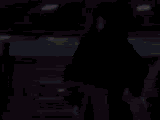What processor can delay or phase shift the video signals?
What processor can take a Signal video source signal and create
double/triple exposers?
If i have a VCR or DVD player and use a video splitter that splits its 3 or 4 ways having 3 or 4 outputs how can i delay or phase shift the video signals so they create multiple exposers overlapping please?
What causes flicker or strobing video signals?
What processor can cause a video signal to flicker or strobe? (variable shutter speed) but how can i take a pre-recorded video signal and ADD shutter/flicker what would cause or do this please?
And Yes i know digital video mixers do flicker or stobe but how did ANALOG video mixers do this what type/kind of circuit/network would generate a flicker/strobe circuit/network? its like a On/off pulsing circuit but what kind?
Most digital video mixers i read about don't do double or triple exposers how did they do this
What is the theory behind Analog video mixers? the circuit block diagram
1.) inputs mixing section ( i understand)
2.) The crossfading section ( i understand)
3.) What else is inside a video mixer in sections please?
Would a TBC create time delay video signals to create double or triple exposers but how please?
What TBC processor has a FEEDBACK LOOP so i can feedback the output to the input
What Video processor creates video Delay signals? that has a "feedback loop" so the processors output feedbacks to the input? what would do this please for video signals?
What processor can take a Signal video source signal and create
double/triple exposers?
If i have a VCR or DVD player and use a video splitter that splits its 3 or 4 ways having 3 or 4 outputs how can i delay or phase shift the video signals so they create multiple exposers overlapping please?
What causes flicker or strobing video signals?
What processor can cause a video signal to flicker or strobe? (variable shutter speed) but how can i take a pre-recorded video signal and ADD shutter/flicker what would cause or do this please?
And Yes i know digital video mixers do flicker or stobe but how did ANALOG video mixers do this what type/kind of circuit/network would generate a flicker/strobe circuit/network? its like a On/off pulsing circuit but what kind?
Most digital video mixers i read about don't do double or triple exposers how did they do this
What is the theory behind Analog video mixers? the circuit block diagram
1.) inputs mixing section ( i understand)
2.) The crossfading section ( i understand)
3.) What else is inside a video mixer in sections please?
Would a TBC create time delay video signals to create double or triple exposers but how please?
What TBC processor has a FEEDBACK LOOP so i can feedback the output to the input
What Video processor creates video Delay signals? that has a "feedback loop" so the processors output feedbacks to the input? what would do this please for video signals?







Comment